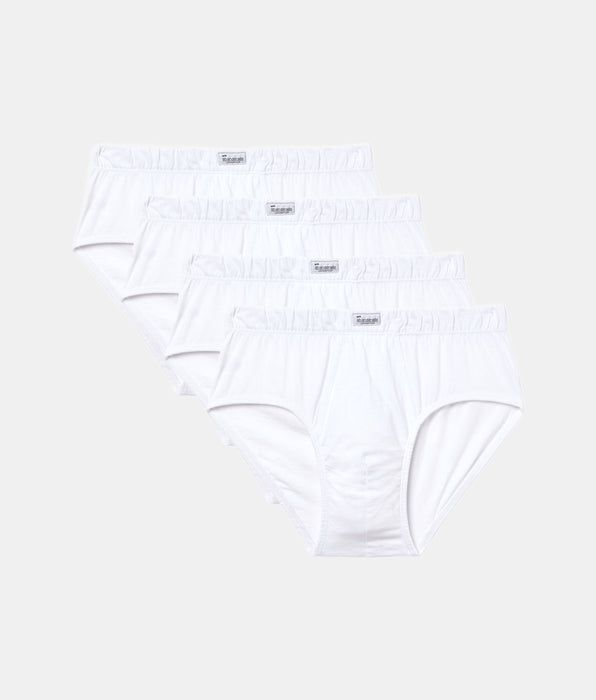Cotton is a legendary fabric in the textile industry, but in recent years it has evolved toward sustainability and ethical and responsible production, with the
distinction between organic and conventional cotton becoming more noticeable.
At Abanderado, we've led this change with initiatives like Ecosmart, our collection made with over 90% sustainable materials and certified with the
GOTS seal from Ecocert Greenlife under license 216088. If you want to know what distinguishes organic cotton from conventional cotton, keep reading because we'll explain their main differences and how to distinguish them.
What are the differences between organic and conventional cotton?
It's common to find clothing labels that use the term
"natural cotton." However, this only means that it comes from a plant, but it doesn't imply that the fabric is free of synthetic components. This is the main difference between organic and conventional cotton: the
use of chemicals in the production of fabrics.
Organic cotton, also called ecological cotton, is grown and processed
without the use of pesticides or chemicals at any stage of its production.
Conventional cotton
consumes 25% of the world's insecticides , with the resulting polluting effect on the planet. However, the differences between the two go deeper. Let's look at them in detail below.
Production
The cultivation processes for
organic and conventional cotton are radically different.
Sustainable techniques such as crop rotation and composting are used in organic cotton fields. The goal is to enhance the soil's regenerative capacity. This reduces water consumption because the soil absorbs irrigation better. The crop adapts to the land's natural production rhythm.
Of course,
no pesticides, chemical fertilizers, or genetically modified seeds are used . Pests are controlled with insects, while the soil is enriched with organic products such as humus or rock dust.
Harvest
The difference between organic and conventional cotton isn't limited to the cultivation method; it's also evident in the harvesting process.
Organic cotton is hand-picked , preserving the purity of each fiber, giving it a
softer texture and greater durability . This is unlike conventional cotton harvesting, which is obtained using heavy machinery, prioritizing quantity and speed over quality.
Treatment of garments
The
absence of toxic substances is a constant throughout the entire organic cotton garment manufacturing process, including spinning. Of course, only
natural dyes are applied. The result? Producing longer-lasting clothing, as it has not been damaged during handling, as is the case with Abanderado's
Ecosmart organic cotton collection , which is GOTS certified by Ecocert Greenlife for being garments made with 95% organic materials, and 90% in the Vigoré gray model.
New cotton varieties
The commitment to organic cotton is a commitment to the future and, at the same time, represents the recovery of roots. By investing in organic material, we are
recovering cotton varieties that were on the verge of extinction because they had been discarded in conventional cultivation. With the new philosophy of attachment to the land, its rhythms, and characteristics, native cotton species have been rescued.
Farmers' Health
The elimination of pesticides and toxic substances has a
direct impact on farmers' health . This is no small issue. According to WHO figures, exposure to chemicals during cultivation or textile processing causes nearly 30,000 deaths, in addition to countless health consequences for these workers. This risk is eliminated when choosing organic cotton.
In addition, there are other positive effects on the lives of those employed in organic cotton farming and processing. For example, there are
improved working conditions and fair pay . There are also the measures being implemented regarding gender equality, especially considering that this is a highly feminized sector.

How to identify organic cotton?
There are various
international certifications that guarantee that a garment has been made with organic cotton. Therefore, by checking the label of each garment, we can obtain more information about its composition. Among the most prestigious are the following:
- BCI (Better Cotton Initiative) Certification : awarded to companies that collaborate with this initiative, which promotes sustainable cotton cultivation.
-
GOTS Certification : a leading seal for sustainable fabric manufacturing that confirms that garments contain 70% organic fibers. This certification also demonstrates that the labeling, manufacturing, marketing, and distribution of the clothing have been carried out following environmentally friendly policies. This is the case with Abanderado's Ecosmart collection, made with over 90% organic cotton and certified by Ecocert Greenlife under license 216088.
- OCS 100 Certified : means that the garment is made from certified organic materials in a ratio of 95%-100%.
-
OEKO-TEX certification : This is a certification that guarantees the responsible production of a textile product at various levels. For example, its STANDARD 100 certification refers to the absence of any harmful substances. All Abanderado products bear this seal.
The textile industry must stop being one of the most harmful pollutants for the planet. Crop substitution, with marked differences like those between organic and conventional cotton, is an essential step forward. This is certainly
Abanderado's commitment to making
men's underwear synonymous with
sustainability and respect for the environment.


























